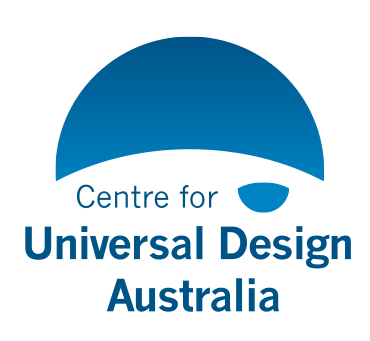Universal Design – a prerequisite for achieving universal human rights, social and economic sustainability.
Decades of research and practice across design disciplines establish Universal Design (UD) as a successful strategy to secure a sustainable, equitable, and resilient future for all. Solutions based on Universal Design should be given justified priority over solutions that only focus on accessibility for a limited group. This Declaration is therefore a call to action for implementing Universal Design.
Demographics
With ageing populations, inaccessible and unsustainable digital and physical environments, products, and services are no longer acceptable. Economic disadvantage and regional conflicts dramatically increase the incidence of disability. There are over one billion people (1.3 billion – WHO) with disabilities globally, and 750 million people over the age of 65. By 2050, the number of people with disabilities is expected to rise to 1.5 billion.
To fully participate in and experience the world in a fair and equal way, individuals must be able to independently interact with a range of infrastructure and services that are accessible, usable and inclusive. Inaccessibility creates not only physical barriers but also limits access to transport, healthcare, education, and employment. Barriers can also be attitudinal, behavioural, or informational. A cohesive systems approach, crossing sectors and domains, is required, supported by legislation, standards, in a Universal Design framework.
What is Universal Design (UD)?
Universal Design is both a philosophy and a strategy for planning and design, ensuring that products, services, and environments can be used by all people in society. It applies to the entire population, encompassing individuals of diverse abilities, ages, genders, sizes, languages, and ethnic backgrounds. The ambitious goal of Universal Design is to create solutions that work for all.
The World Health Organization (WHO), in its contextual definition of disability, advocates for identifying facilitators of human participation that go beyond barrier removal. WHO recommends Universal Design as the most promising framework for creating enabling environments in physical, informational, and communication contexts.
As defined by the United Nations Convention on the Rights of Persons with Disabilities (UNCRPD), Universal Design refers to the design and composition of environments, products, or services that meet the needs of all users, rather than catering to a small segment of the population. The UNCRPD highlights two outcomes of Universal Design:
- In Article 4(4), it emphasizes the need for State Parties to “undertake or promote research and development of universally designed goods, services, equipment, and facilities to promote their availability and use along with the development of standards and guidelines.”
- Article 4(f) stresses the importance of designs that “require the minimum possible adaptation” and are achievable at the “least cost.”
The goal of Universal Design is that everyone should be able to use the same entrances to buildings, the same public transport systems, and the same websites—without needing special solutions or assistive devices. UD builds on the foundation of accessibility compliance, but also anticipates and responds to conditions and situations for solutions that support equity and inclusion not covered by accessibility.
UD is a fundamental element of good design. When a design works well for people at the edges of the human spectrum, it works better for everyone. Universal Design enhances usability, safety, health, and innovation across products, services and systems.
Cost Benefit and Socio-Economic Impact
Research shows that Universal Design delivers measurable economic and social benefits. In Australia, for example, implementing UD in retail led to a $4 billion increase in household and clothing sales. In education, UD helped 228,000 learners achieve additional qualifications, leading to higher employment rates and salaries. Additionally, over 4% more people gained financial inclusion as a result of universally designed financial services.
Similarly, a cost-benefit analysis of public transport in Norway, where Universal Design has been a government priority since 2005, yielded comparable findings. The study showed that the value passengers placed on Universal Design solutions significantly enhanced their experience and inclusivity.
The Importance of Safe and Good Design
Urgent action is required to ensure good and safe design across all environments, including homes. People should not have to live in dangerous overcrowded housing or be forced into care settings. It is known that older people and individuals with disabilities prefer to live independently in their own communities. Retrofitting environments to support an ageing population is part of the universal design solution. We must design environments today that will be usable by all in the future. Universal Design provides a methodology for understanding the needs, wants, and preferences of end-users and designing mainstream products and services that are usable by as many people as possible. Universal Design focuses on human diversity and involving diverse users in all stages of the design process is at the core of the approach.
UNCRPD and Agenda 2030
The UN Convention on the Rights of Persons with Disabilities (UNCRPD) recognises Universal Design as the preferred approach for ensuring inclusive environments. There is an opportunity to build a more equitable and inclusive society based on the UNCRPD and the World Health Organization’s seventeen Sustainable Development Goals (SDGs). These goals address social, economic, and environmental sustainability, promoting long-term jobs, technological innovation, increased educational participation, and a transition to a circular, green economy.
The 2030 Agenda for Sustainable Development, adopted by all UN member states in 2015, introduced 17 Sustainable Development Goals (SDGs) that place sustainability at their core. Member states must ensure that all people can fulfil their potential in dignity, equality, and within a healthy environment. Universal Design is crucial for achieving several key SDGs, including:
- Ensuring quality, inclusive, and equitable education
- Promoting lifelong learning opportunities for all
- Promoting inclusive and sustainable economic growth
- Securing full and productive employment and decent work for all
- Making cities and human settlements inclusive, safe, resilient, and sustainable.
Ensuring that no one is left behind is central to the Sustainable Development Goals’ recurring pledge to “Leave No One Behind” (LNOB). The implementation of the SDGs must not create further divisions, and all resources and competencies must be mobilised to ensure success.
Universal Design: A Key to Sustainability
As we face the challenges of climate change and the transition to a circular economy, Universal Design is critical for reusing existing infrastructure and making schools, workplaces, housing, and public spaces usable by all. Universal Design is an essential tool for fulfilling the pledge to Leave No One Behind.
Call to Action
To achieve a sustainable, equitable, and resilient future, certain principles must guide the development of global, national, regional, and local policies and practices:
- Implement Universal Design as a philosophy, strategy, and approach.
- Comply with the UNCRPD and the 2030 Agenda for Sustainable Development.
- Promote and invest in research, development, design, and innovation that adhere to Universal Design principles, making products, services, and environments inclusive and affordable, by applying a human-centric and participatory approach.
- Strengthen civil society participation in design and decision-making, particularly involving persons with disabilities, older people, and their representative organisations, as well as the private sector.
- Introduce standards and policies based on Universal Design to eliminate fragmentation in the private and public sectors.
- Ensure a Universal Design approach to both digital and physical environments as an integral part of sustainable design.
- Integrate Universal Design into education to ensure equality of access, opportunity, and outcomes.
- Ensure that people can continue to live in their own communities by applying Universal Design principles to homes, public spaces, and transport.
The participants of UD 2024 call upon policymakers and design practitioners to demand that all nations commit to a Universal Design approach to ensure future environments, products, and services are inclusive across the broadest possible spectrum of people.
“Universal Design is essential for each individual and for the whole society.”







